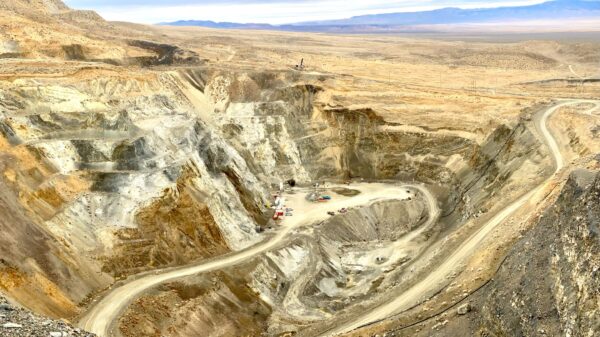Exploration companies are engaging in a mass-exodus from Canada, which could have a serious impact on the dominance of exchanges like the Toronto Stock Exchange (TSX).
The departure has been effected due to the breakdown of the sector’s traditional model, which involved prospectors attracting investors before being acquired themselves by established producers. Now this model is under strain, according to a Bloomberg report.
Industry consolidation has reduced head offices and listings, making it harder for companies to attract investors. In the past nine months, Lithium Argentina (NYSE: LAR) (FRA: ZV5), Solaris Resources (TSE: SLS) (NYSEAMERICAN: SLSR), and Falcon Energy Materials (CVE: FLCN) (OTCMKTS: SRGMF) have moved their headquarters from Canada.
The report said Cornish Metals (OTCMKTS: SBWFF) (CVE: CUSN) and Almonty Industries (OTCMKTS: ALMTF) (TSE: ALL) plan to make similar moves.
Barrick Gold (TSE: ABX) (NYSE: GOLD), the world’s second-largest miner, has also considered relocating to the US. Meanwhile, Solaris Resources moved to Ecuador after cancelling a financing deal with Zijin Mining Group.
Falcon Energy relocated to Dubai after failing to secure a USD$12.7 million investment from China’s Carbon ONE New Energy Group.
As mentioned earlier, Lithium Argentina moved its headquarters to Switzerland in January, citing strategic and commercial advantages.
“The industry that has fuelled most of the great Canadian minerals discoveries over the past 50 years is but a skeleton of itself,” said mining financier Pierre Lassonde, who co-founded Franco-Nevada Corp. (TSE: FNV) (NYSE: FNV) “We should be extremely concerned.”
Read more: Equinox Gold acquires Calibre Mining for $2.6B
Read more: Calibre Mining beats gold guidance for 2024 in Nevada and Nicaragua
The Toronto Stock Exchange and TSXV host 40% of the world’s public mining companies
Furthermore, Allied Gold (TSE: AAUC) (OTCMKTS: AAUCF) is applying for an uplisting to the New York Stock Exchange, adding to the already sizeable list of gold miners with dual Canadian and US listings. Major deals have strengthened New York’s status as a global hub for gold equities, creating North American titans like Newmont Corporation (TSE: NGT) (NYSE: NEM) and Barrick.
The Toronto Stock Exchange and the TSX Venture Exchange host 40 per cent of the world’s public mining companies. They collectively include 1,097 listings, exchange owner TMX Group Ltd. said in its latest listings guide.
This marks a decline from 2010, when the exchanges hosted 1,531 mining companies, accounting for 56 per cent of global industry listings. Furthermore, stock markets in London, Sydney, and New York have intensified competition to attract mining companies, contributing to this decline.
Additionally, a lack of initial public offerings (IPOs) has added to the decline. No significant mining IPOs have launched in the past year.
The financing drought began during the early 2010s commodities boom, when miners borrowed to fund exploration targets and massive takeovers. When markets crashed, they left balance sheets in shambles and shareholders facing dramatic losses.
Read more: Calibre Mining beats updated gold production guidance with 242,487 ounces
Read more: Calibre Mining’s mineral resource estimate in Talavera gives reasons for optimism
Small firms rely on Chinese funding due to lack of domestic options
There’s also something to be said for the growing investor interest in exchange-traded funds, which have pushed aside smaller, resource-focused funds that invest in junior miners.
This shift has forced smaller companies to seek financial support from other sources, including Chinese investors. Lassonde said small firms rely on Chinese funding because they lack alternatives.
“As juniors, you get the money wherever you can,” Lassonde said. “And if Canada can’t be there for them, they leave.”
.












